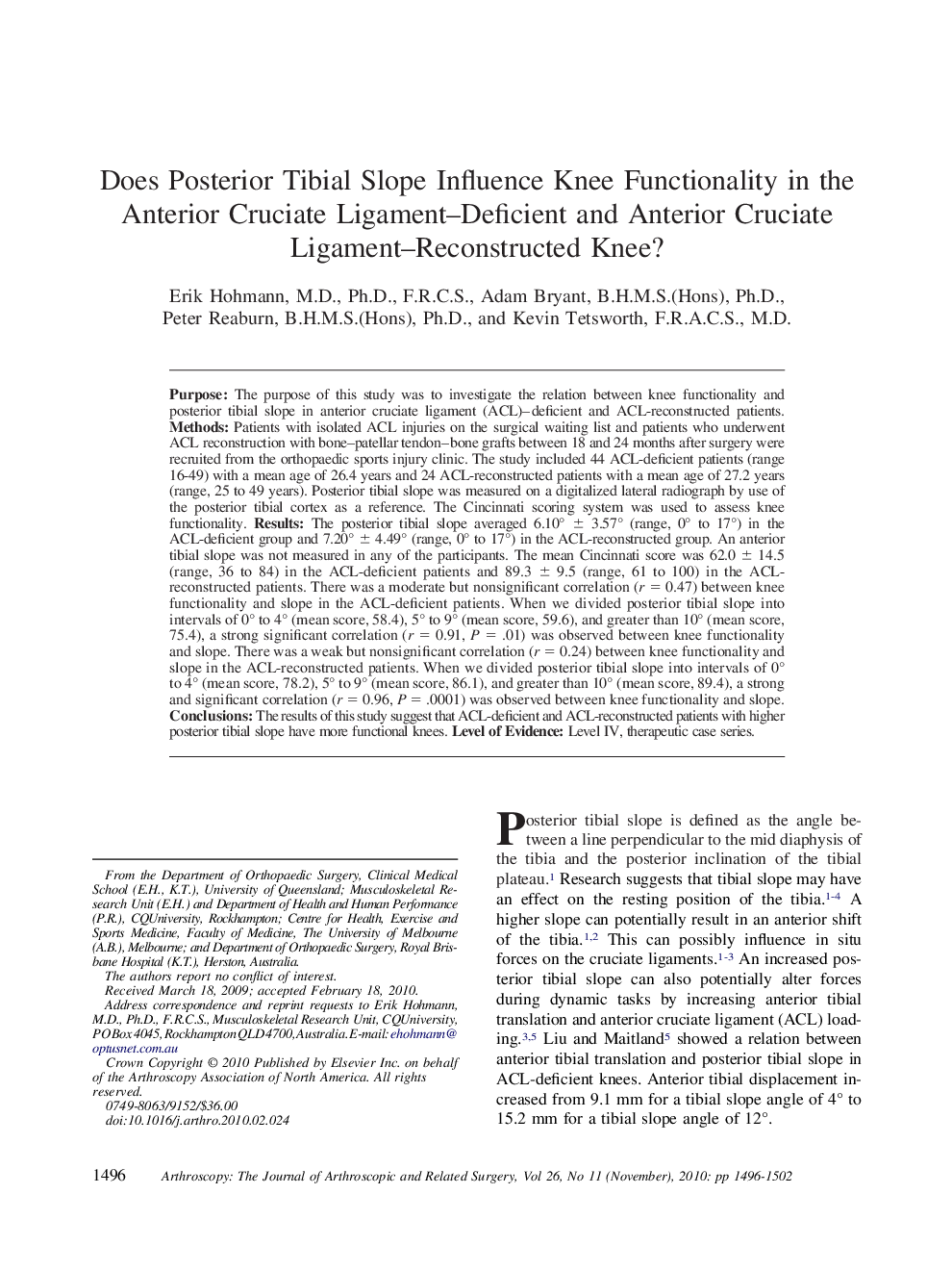| Article ID | Journal | Published Year | Pages | File Type |
|---|---|---|---|---|
| 4045057 | Arthroscopy: The Journal of Arthroscopic & Related Surgery | 2010 | 7 Pages |
PurposeThe purpose of this study was to investigate the relation between knee functionality and posterior tibial slope in anterior cruciate ligament (ACL)–deficient and ACL-reconstructed patients.MethodsPatients with isolated ACL injuries on the surgical waiting list and patients who underwent ACL reconstruction with bone–patellar tendon–bone grafts between 18 and 24 months after surgery were recruited from the orthopaedic sports injury clinic. The study included 44 ACL-deficient patients (range 16-49) with a mean age of 26.4 years and 24 ACL-reconstructed patients with a mean age of 27.2 years (range, 25 to 49 years). Posterior tibial slope was measured on a digitalized lateral radiograph by use of the posterior tibial cortex as a reference. The Cincinnati scoring system was used to assess knee functionality.ResultsThe posterior tibial slope averaged 6.10° ± 3.57° (range, 0° to 17°) in the ACL-deficient group and 7.20° ± 4.49° (range, 0° to 17°) in the ACL-reconstructed group. An anterior tibial slope was not measured in any of the participants. The mean Cincinnati score was 62.0 ± 14.5 (range, 36 to 84) in the ACL-deficient patients and 89.3 ± 9.5 (range, 61 to 100) in the ACL-reconstructed patients. There was a moderate but nonsignificant correlation (r = 0.47) between knee functionality and slope in the ACL-deficient patients. When we divided posterior tibial slope into intervals of 0° to 4° (mean score, 58.4), 5° to 9° (mean score, 59.6), and greater than 10° (mean score, 75.4), a strong significant correlation (r = 0.91, P = .01) was observed between knee functionality and slope. There was a weak but nonsignificant correlation (r = 0.24) between knee functionality and slope in the ACL-reconstructed patients. When we divided posterior tibial slope into intervals of 0° to 4° (mean score, 78.2), 5° to 9° (mean score, 86.1), and greater than 10° (mean score, 89.4), a strong and significant correlation (r = 0.96, P = .0001) was observed between knee functionality and slope.ConclusionsThe results of this study suggest that ACL-deficient and ACL-reconstructed patients with higher posterior tibial slope have more functional knees.Level of EvidenceLevel IV, therapeutic case series.
